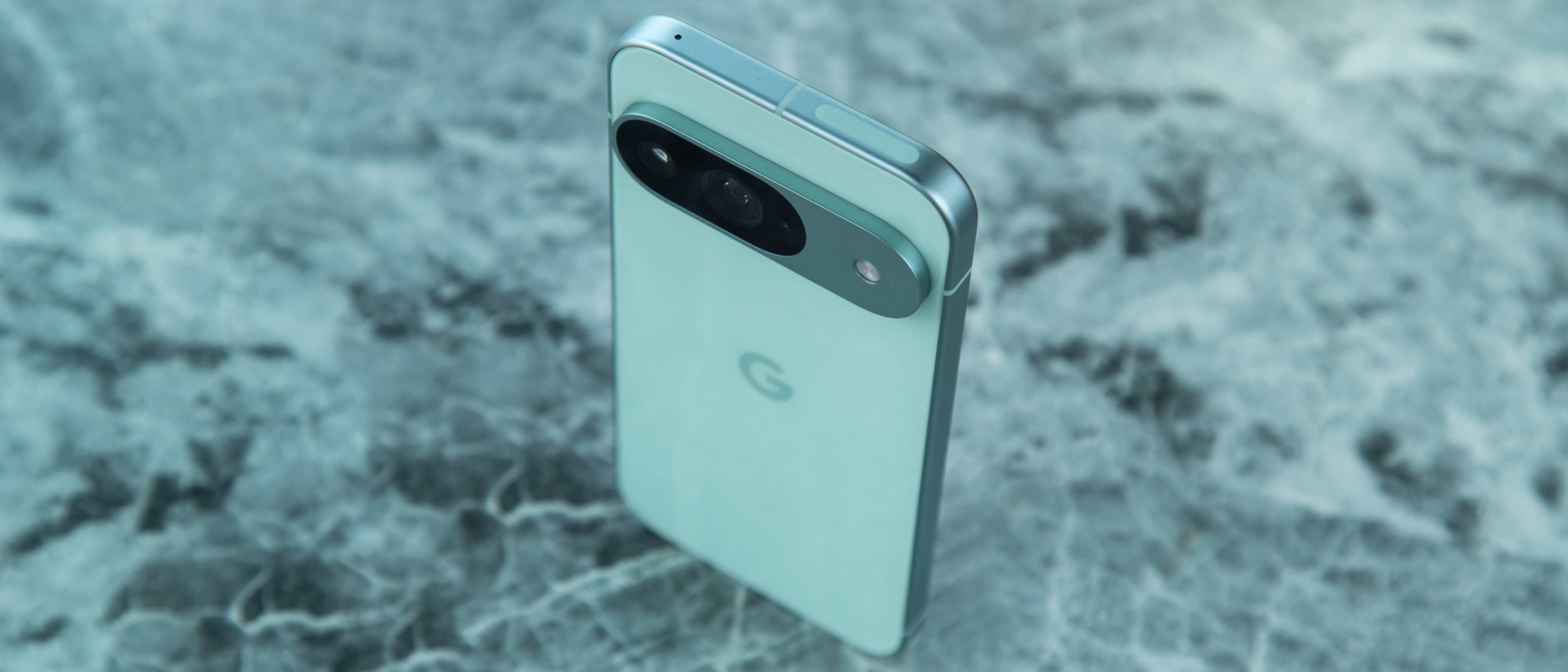Android Central Verdict
Is the Pixel 9 worth $100 more than the Pixel 8? Better yet, is it worth $300 more than the Pixel 9a? A marginally better chipset with more RAM, an improved dual-camera system, and on-device AI processing may not seem like a significant upgrade, but it all adds up to a phone that is much more enjoyable and capable. I just wish Google would treat it like a flagship instead of gatekeeping features and limiting the base storage.
Pros
- +
New design is very nice
- +
Beautiful and bright display
- +
12GB of RAM should be enough for anyone
- +
Great camera with fun AI features
- +
Good audio and haptics
- +
First to grab Android 16
Cons
- -
Google still gatekeeps features for the Pro
- -
$300 more expensive than Pixel 9a
- -
Still only two rear cameras
- -
Slow charging
Why you can trust Android Central
The Google Pixel 9 represents a slight departure from its predecessor, offering not just a new look but several spec upgrades that inch this phone closer to a "Pro" device. Unfortunately, it's not quite there, despite Google inflating the price by $100 to match some other competitors, but it gets close, offering plenty of fun AI features that users are sure to love (or ignore).
But even so, the Pixel 9 now has the newer and cheaper Pixel 9a to worry about, and it makes one wonder if the $300 price difference is really worth it.
I've used the Pixel 9 on and off since it launched in August 2024. I can confidently say that this is a very good phone, with enough power and good enough cameras to get the job done. The Pixel 9 may not be the most powerful phone out there, but it is good at what it does, and that should be enough for most people. And what's great is that you don't even need to pay for a subscription to experience some of its best AI features.

Derrek has reviewed dozens of smartphones for the past five years and has used a Pixel from each generation since the Pixel 6, often carrying one as a secondary phone to use for their great cameras.
Google Pixel 9: Price and availability

The Google Pixel 9 was announced in early August 2024 during the Made by Google 2024 event and went on sale on August 22. The phone starts at $799 for the 12GB/128GB variant, while the 256GB version is priced at $899. However, if you shop around enough, you will most likely find some compelling Pixel 9 deals, and the phone is currently $200 off at the Google Store.
The phone is available in four different colors: Peony (pink), Wintergreen (green), Obsidian (black), and Porcelain (silver/white).
Google sells the Pixel 9 in the following countries: U.S., Canada, U.K., Austria, Belgium, Czechia, Denmark, Finland, France, Estonia, Germany, Hungary, Ireland, Italy, Latvia, Lithuania, Netherlands, Norway, Poland, Portugal, Romania, Slovakia, Slovenia, Spain, Switzerland, Sweden, Australia, India, Japan, Malaysia, Singapore, and Taiwan.
Google Pixel 9: Design

- More angular design is surprisingly comfortable in hand.
- The phone is a bit slippery, so you'll want a case.
- Gorilla Glass Victus and an IP68 rating make this a durable phone.
The Pixel 9 looks quite different from its predecessor, but many of the main design cues are still there. The iconic camera visor is now a "floating" camera bar with an all-aluminum chassis and a rounded cutout for the dual camera system.
Get the latest news from Android Central, your trusted companion in the world of Android
One thing I was concerned about regarding the new Pixel 9 design was the flat design, as I've become a bit weary of sharp edges, as they tend not to play nicely with my fingers when handling the phone one-handed. Fortunately, that's not the case here, as the satin metal frame is surprisingly soft, and Google has given it a very slight curve where the frame meets the front and rear panels, which prevents the phone from digging into your pinky finger.

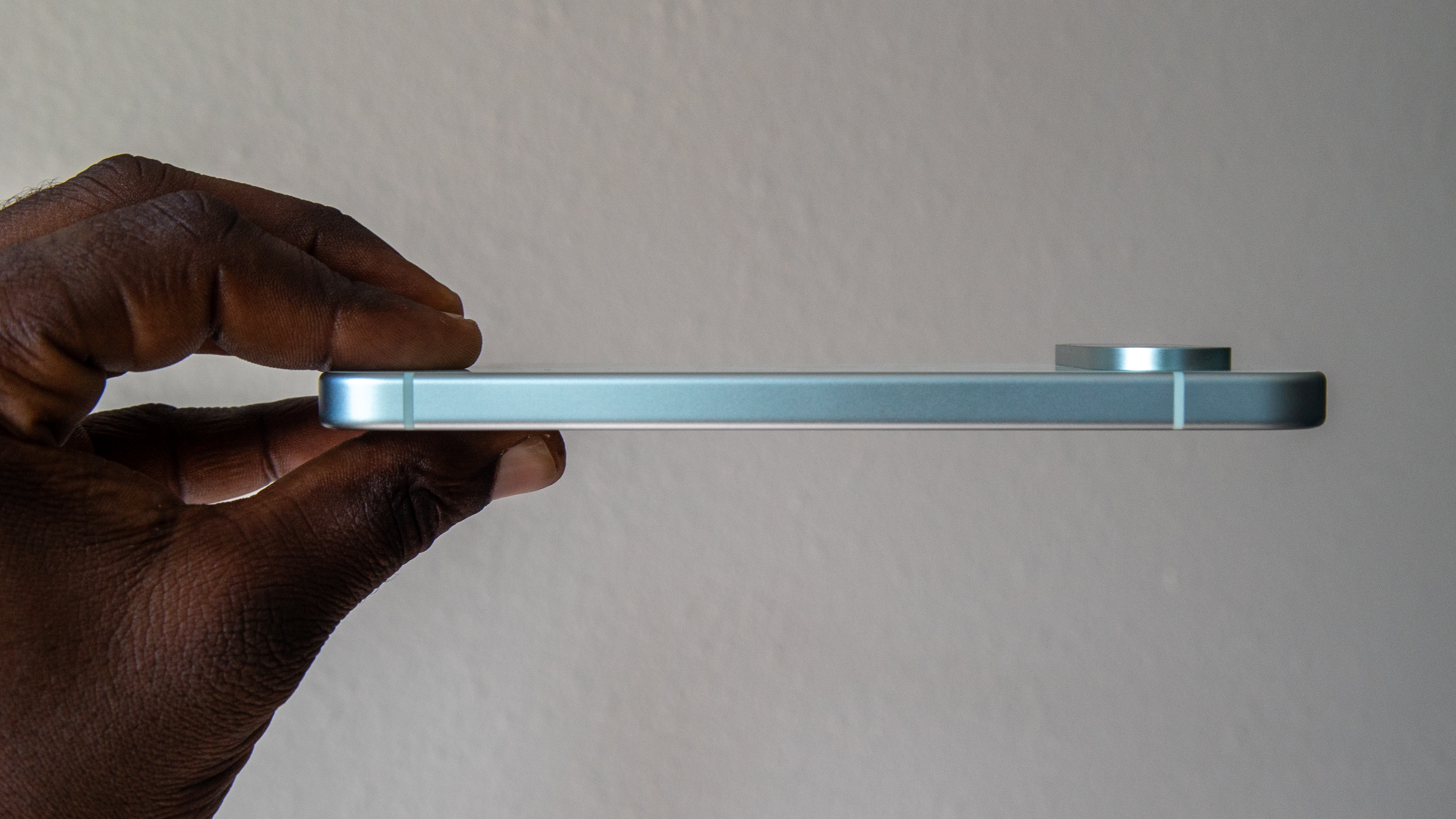



At first glance, the Pixel 9 may give you iPhone vibes, at least if you look at it from the front and the sides. In fact, many of my friends would comment on how similar it looks to an iPhone. They could go so far as to say Google "stole" the design, which I think is going a bit too far, but the resemblance is a bit uncanny.
The phone is still fairly small despite being a couple of millimeters larger than the Pixel 8. Given its size, I wouldn't exactly place this among the best small Android phones, and my only complaint is that despite not having the smallest bezels I've encountered on a flagship, I find my finger accidentally activating Circle to Search pretty often. It's not a huge annoyance, but something to point out if you enable the feature.

I would also suggest investing in a Pixel 9 case. As nice as it is to feel your phone in its natural, naked state, this phone is just too slippery for its own good. There have been several times when I've set it down on a surface, only to hear it fall onto the ground a mere minutes later. Fortunately, the aluminum frame and Gorilla Glass Victus 2 make the phone quite durable, but I would rather not risk it any more than necessary.
Google Pixel 9: Display

- The 120Hz OLED panel is bright and smooth.
- The bezels are a big larger than I would expect from a flagship.
- Ultrasonic fingerprint sensor is fast and accurate.
- Google sticks to low PWM rates, which continues to be a bummer.
The OLED display looks great, and the Adaptive display mode doesn't overly saturate colors, unlike on other phones. You will need to remember to turn on Smooth Display to activate the 120Hz refresh rate, but once you do, it's smooth sailing.
The added brightness also means that viewing content outdoors should be no problem. Just make sure to slap on a Pixel 9 screen protector, as I've already noticed some very light scratches across the display on my unit. These scratches aren't really noticeable until I view the display from a certain angle with it off (but they're still enough to annoy me).
I also have no complaints so far about the new ultrasonic fingerprint sensor, which feels fast and accurate.

While the Pixel 9 Pro features the same display size, it boasts a higher QHD+ resolution. However, I don't think you'll miss it on this phone, which has only a FHD+ panel. Everything still appears sharp, and content looks great. Would a higher resolution have been nice? Perhaps, but at this size, it doesn't really matter much, and the slightly smaller and just as costly Galaxy S25 has the same resolution.
Yet, while I find the display to be quite nice, others may not fare as well. Google still maintains the display at a particularly low PWM rate, which may make it difficult for people who are sensitive to PWM to use the display for long periods.
Google Pixel 9: Hardware and specs
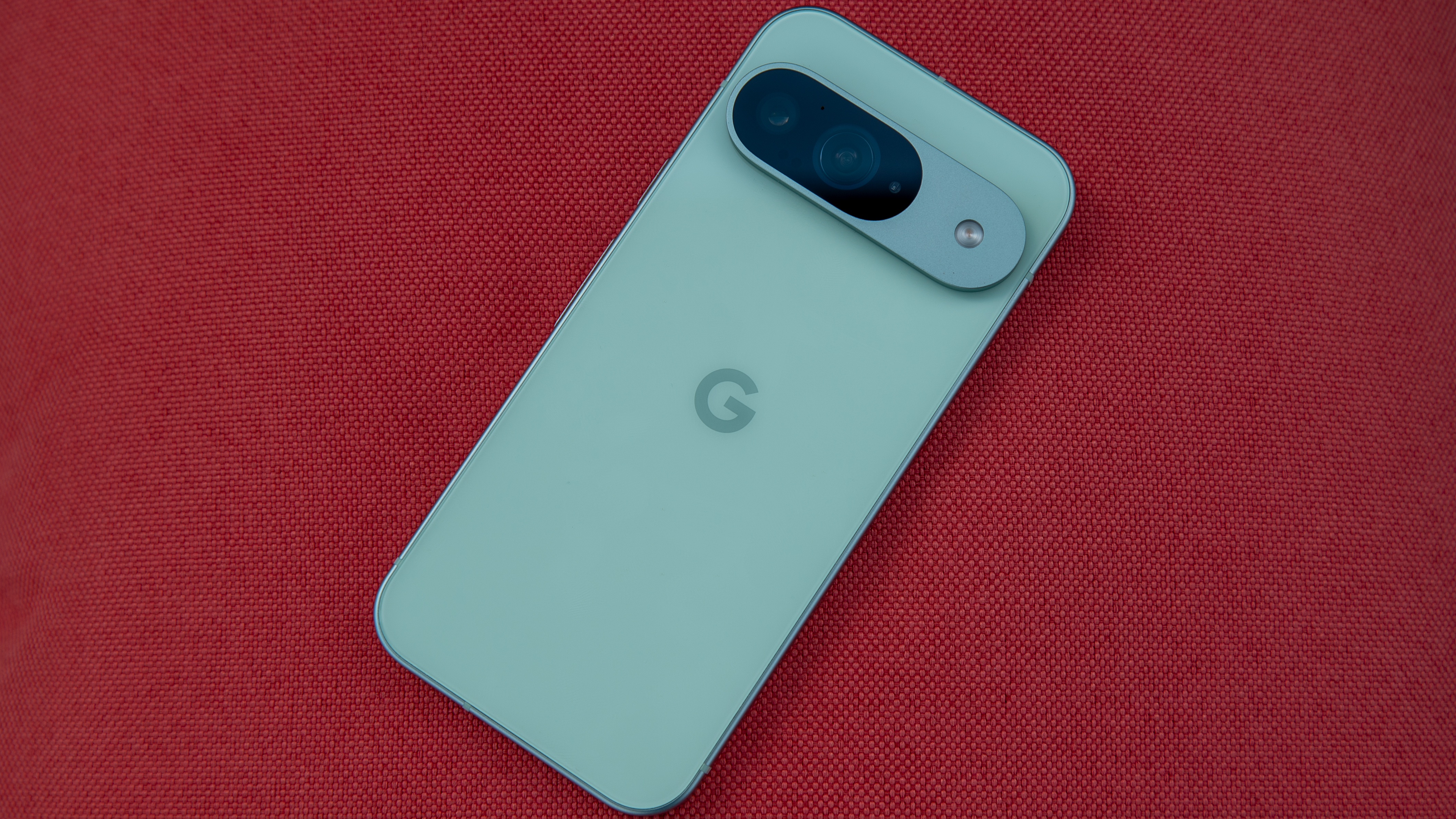
- The Tensor G4 and 12GB of RAM make for a highly performant phone.
- Haptics feel great, and audio has nice depth.
- In 2025, 128GB of storage doesn't feel like enough.
The Tensor G4 chipset isn't a huge upgrade over its predecessor, but that matters very little here. Coupled with 12GB of RAM, the Pixel 9 performs exceptionally well when opening and juggling apps. I believe most people purchasing this phone will be pleased with its performance, particularly when it comes to AI tasks.
I haven't noticed the phone getting too warm when playing games like Honkai: Star Rail or Fall Guys, which is a good sign to me. However, touch input does seem ever-so-slightly delayed at times.
Category | Google Pixel 9 |
|---|---|
Display | 6.3-inch Actua display, 120Hz AMOLED (60-120Hz), 2400x1080, HDR, 2700 nits, Gorilla Glass Victus 2, 240Hz PWM dimming |
Chipset | Google Tensor G4, Titan M2 security module |
RAM | 12GB |
Storage | 128GB/256GB |
Rear camera 1 | 50MP f/1.68, 1/1.13" sensor, Octa PDAF, 82-degree FoV, OIS, 4k/60 recording |
Rear camera 2 | 48MP f/1.7, 1/2.55" sensor, 123-degree wide-angle, macro, autofocus, Quad-PD, 4k/60 recording |
Rear LDAF sensor | Single-zone laser autofocus |
Front camera | 10.5MP f/2.2, 95-degree wide-angle, autofocus, 4k/60 recording |
Connectivity | Wi-Fi 7, 5G (mmWave and Sub-6), Bluetooth 5.3, NFC, AptX HD, USB-C 3.2, Physical and eSIM, Satellite SOS |
Ingress Protection | IP68 dust and water resistance |
Security | In-screen ultrasonic fingerprint module, face unlock |
Audio | Stereo sound, USB-C |
Battery | 4,700mAh, 27W wired charging, 20W wireless charging, 5W reverse wireless charging |
Dimensions | 152.8 x 72 x 8.5mm, 198g |
Colors | Obsidian, Porcelain, Wintergreen, Peony |
Software support | 7 years of Pixel and OS updates |
The phone has pretty decent haptics and good audio, which doesn't surprise me. The dual stereo speakers produce a sound that is very full, with plenty of depth and good bass response, while the haptics remain quite subtle when navigating the phone or receiving notifications.
I'm not particularly fond of the base model's 128GB of storage, which seems insufficient for a flagship phone in 2024, and especially in 2025. As such, after setting up the Pixel 9 and transferring apps and audio from my daily driver, the Pixel informed me that I had used 90% of my available storage. Google One storage helps mitigate some of that pressure, but it's still a silly thing to deal with on an $800 phone.
I am disappointed to see the lack of UWB support, which means you can't take advantage of more powerful location-tracking features or digital car key functionality. Whether it's truly necessary remains to be seen, but it's one of the features that separates this phone and the Pixel 9a from their Pro siblings.
Google Pixel 9: Battery life and charging

I've been quite impressed with the battery life so far. The phone easily lasts me until the end of the day, and I get around seven or eight hours of screen time, which is pretty good. Google claims 24+ battery life and even longer with Energy Saver (since that's kind of how it works), and while I haven't gotten more than a day of battery life, I imagine it will vary based on your usage.
Unfortunately, the 27W charging is almost unbearably slow, which is something that has always annoyed me about Pixel phones. Unlike the Pixel 9 Pro XL, which charges up to 70% in just 30 minutes, the Pixel 9 takes the same amount of time to reach only 50%, although these figures are based on a 45W Google charger, which I don't own.

You also won't find Qi2 wireless charging, which isn't too surprising for a 2024 Android phone. Qi2 Ready didn't become available until early 2025, so hopefully we'll see it in the Pixel 10 at the very least.
Google Pixel 9: Cameras
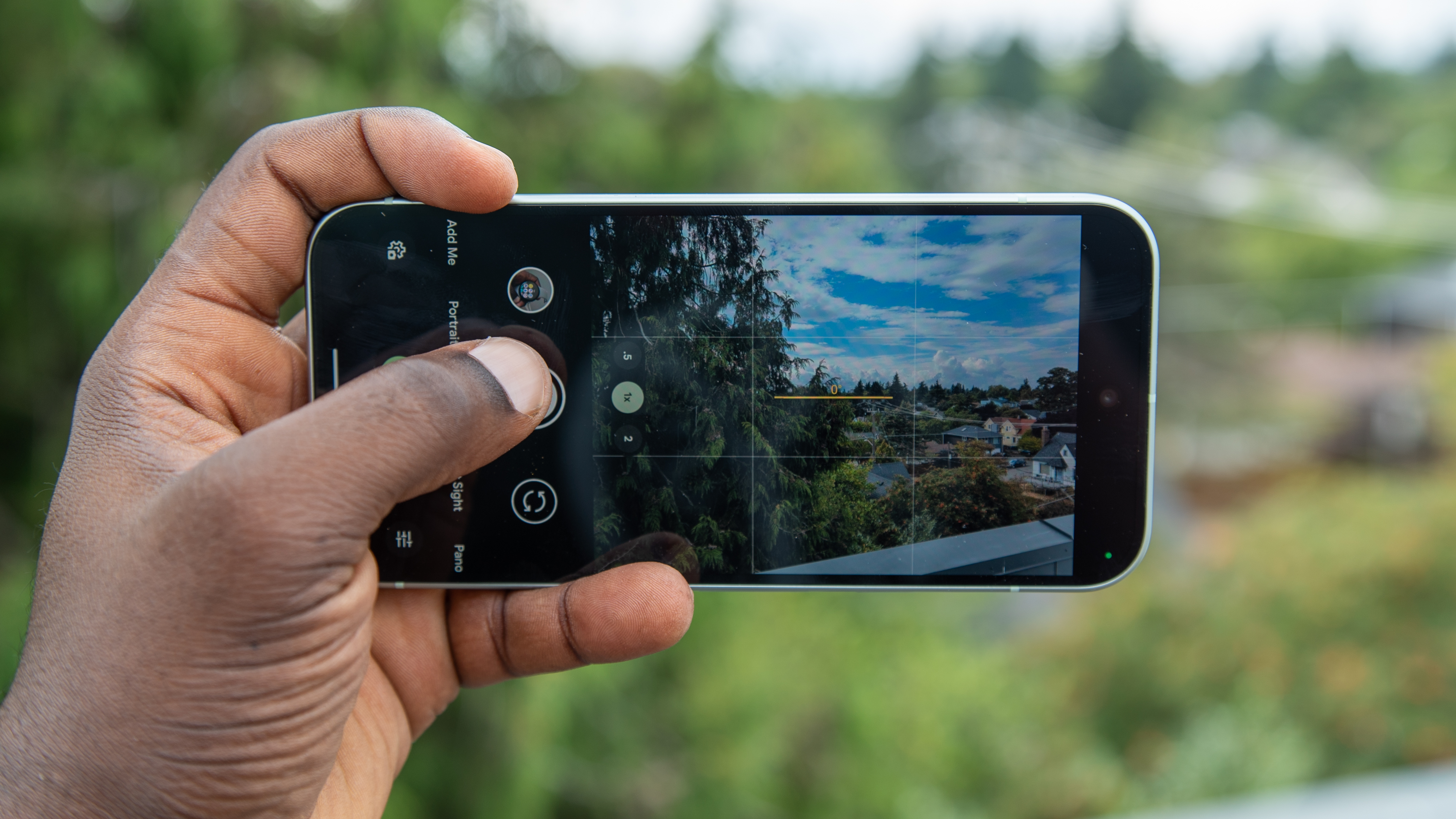
Images captured from the Pixel 9 aren't bad, but they're not particularly remarkable either, which feels weird to say about a Pixel. Images are detailed and crisp, and there's a great deal of dynamic range, even in lower lighting conditions.
That said, I do find that images sometimes lack that extra punch of vibrancy or saturation that I like, and as a result, sometimes photos can appear a bit dull. I've also seen instances where the sky might get blown out, but this doesn't happen too often. Otherwise, images have nice natural bokeh, and Macro Focus takes it to another level by letting you get really close.







After reviewing the Motorola Razr Ultra 2025, I took to the streets to compare its camera to that of other Android phones, using the Pixel 9 as a reference point. Interestingly, the Razr often came pretty close to the overall quality, and I found myself preferring Motorola's more vibrant images over the Pixel's often duller photos.
It handles low-light and nighttime images much better, although the results can sometimes look a bit artificial.














One cool feature I like to show off is Add Me, which lets the person taking a photo add themselves to the image after it's been taken. It's a very neat feature, and I've seen some excellent examples that make it look pretty convincing that everyone was in the photo.
My example (below) is admittedly a bit different from what Google had in mind, and at first glance, it looks fine until you squint and realize something's off. The result isn't perfect, but capturing yourself twice in the same frame is a very cool effect that I wouldn't be able to replicate easily using photo editing applications.
Unfortunately, the Pixel 9 still lacks a third rear camera. This becomes particularly clear when compared to the Galaxy S25, which is also priced at $799 and sports a third lens for 3x telephoto images. Sure, the Pixel takes pretty good images with up to 8x Super Res Zoom, but the lack of a dedicated telephoto camera limits the zoom capabilities when compared to the Pixel 9 Pro.
Google Pixel 9: Software and AI

- The Pixel has received two major OS upgrades since launch.
- Gemini continues to improve with free features.
- The Pixel is still limited when compared to its Pro siblings.
Since launching the Pixel 9 in August 2024 with Android 14, the phone has received two major updates: first to Android 15, and more recently with Android 16. I haven't had much time with Android 16 to give it a proper evaluation, but from our initial Android 16 review, you shouldn't expect a huge overhaul, at least not until the QPR1 update brings the new Material 3 Expressive.
The Pixel 9 supports Gemini Nano with Multimodality, meaning it can handle some pretty complicated stuff. With updates to the Gemini app, features like Live are more powerful than ever, thanks to camera and screen capture capabilities.
There are plenty of fun and useful features beyond the Gemini app, such as Pixel Studio, which can be used to generate images, create stickers, and more.
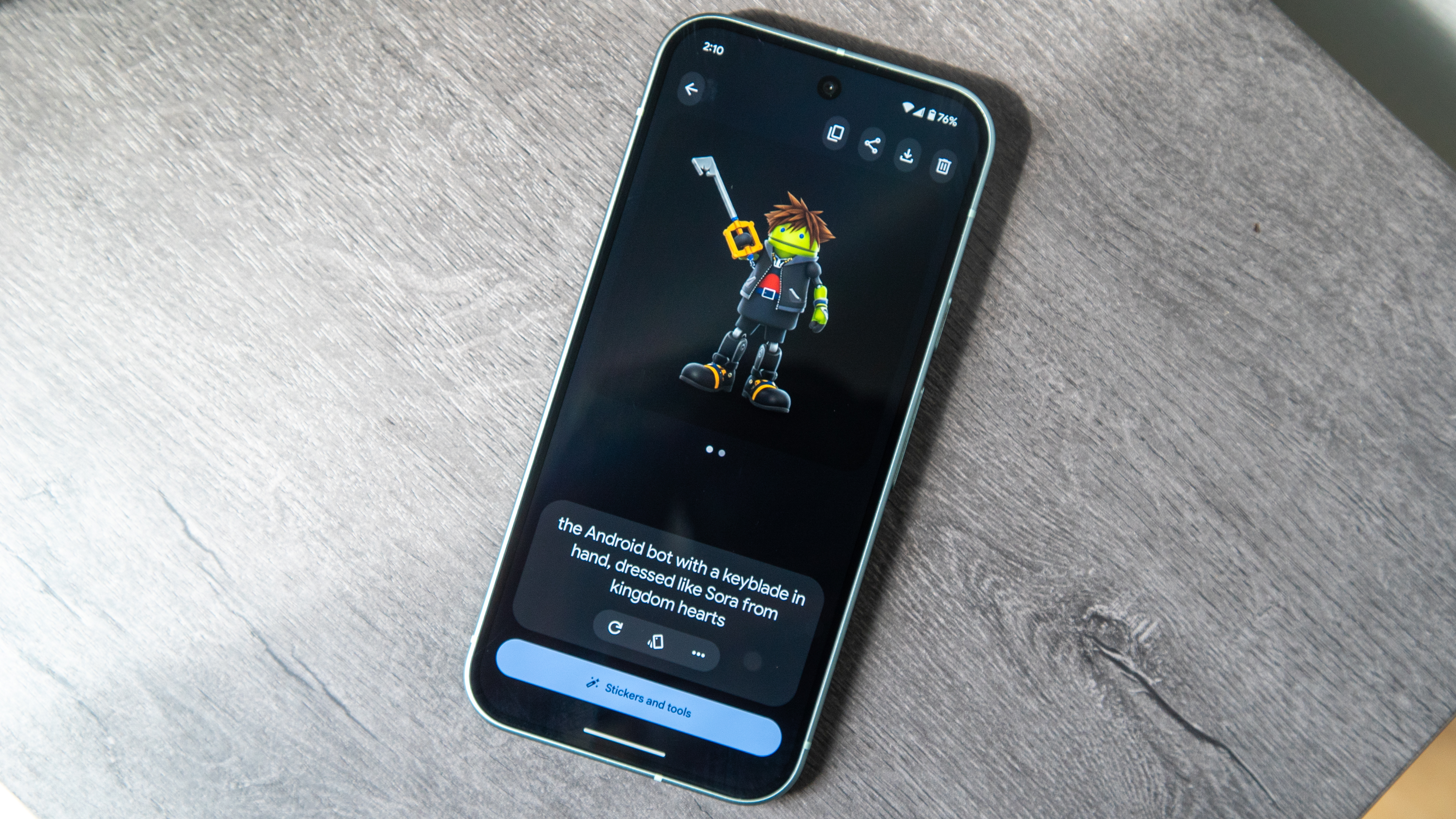
Earlier this year, Pixels also gained a new multi-cam feature that allows you to easily switch to another phone's camera while recording live videos on social media. And with Reimagine in Magic Editor, you change aspects of a photo in your gallery by typing a prompt, completely transforming an image with surprisingly good detail.
Of course, there have been some examples of both Pixel Studio and Reimagine generating some unfavorable things. However, Google is continuing to gain feedback and adjust things accordingly, so we should see much less of that when using these features.

Call Notes is a helpful way to record and transcribe calls. It not only lets you replay the recording or search through the transcription, but the feature also summarizes the call's details, in case you just need to remember the conversation's gist.
Pixel Weather is a beautiful app that does a decent job of covering the basic points of the forecast without overloading you with information. It even brings AI-generated reports to summarize the information in an easy-to-understand way and prepare you for the rest of your day, complete with weather animations.

Since its launch, Pixel Screenshots has received some quality-of-life updates that should make it more accessible and useful, although I still haven't quite found my footing with it and mostly leave it unused.
I also don't use Gemini Live very much, but my coworkers do, and have found some pretty interesting use cases for it. Nick Sutrich used it to assist with grocery shopping, while Brady Snyder utilized the new camera and screen capture features to help him care for his plants.

Google also continues to make new Gemini features free, which is great. While I may not use Gemini Live frequently, I do use the Gemini app fairly often when I need a quick answer to something specific. It does a great job of providing a fairly succinct response and organizing the information in a way that makes it easy to digest.

Unfortunately, Google limits the Pixel 9 compared to its Pro siblings, and it's not clear why. Despite sporting the same Tensor G4 chip and 12GB of RAM, enough to handle on-device AI processing, Google has omitted certain camera features from the base Pixel 9, including Video Boost, Pro Controls, High-Res photos, and more.
When asked why there's such a feature disparity, Google couldn't provide a clear answer, making it seem as though it's just gatekeeping features for its more expensive phones.
On the plus side, you can expect long update support, and you'll be among the first to receive major updates and new features.
Google Pixel 9: The competition

The new Galaxy S25 is the closest competitor to the Pixel 9, as both cost the same and have similar specs. Its main advantages are the arguably more powerful Snapdragon 8 Elite chipset, an additional telephoto lens, access to Galaxy AI features, and Qi2 charging support. However, the Pixel retains its reputation with faster updates and more frequent feature additions. Many users also prefer the Pixel UI to Samsung's One UI, but that's up to individual preference.
The OnePlus 13 is another similarly priced option for those seeking a flagship. As far as specs go, the phone outperforms the Pixel 9 and Galaxy S25 in many areas, boasting a larger battery, significantly faster charging, and up to 16GB of RAM. The downside to getting a OnePlus is that the software isn't for everyone, support isn't as robust, and the phone can't be found in North American carrier stores.
Google Pixel 9: Should you buy it?

You should buy this if...
- You want a new Google flagship without spending $1000.
- You want the latest software and AI features on your phone before anyone else.
- You want some of the best cameras on the market.
You shouldn't buy this if...
- You own a Pixel 8.
- You want a phone with fast charging capabilities.
- You want a phone with a telephoto camera and Pro camera controls.
I've never been a big fan of Pixel phones, but after using the Pixel 9, I think that it's a great phone that you should consider purchasing for your next upgrade, especially if you're not trying to drop $1000 on a Pixel 9 Pro.
Tensor G4 may not be the most powerful chip on the market, but it's perfect for the Pixel and how Google is positioning this phone, especially when paired with 12GB of RAM. Its performance is great, and its battery life is impressive. You also won't be disappointed by its cameras, unless you're hoping for a telephoto lens with strong zoom capabilities.
Yes, the Pixel 9 still doesn't get all the features you'll find on the Pro phones, and that's a problem. It's also a few hundred dollars more than the Pixel 9a, which has similar enough specs that the difference is mostly just in design. If you think you would want some of those missing Pro features, then you should spring for the Pro phones. However, if you think you can live without the extra RAM while shaving hundreds off the price, you might want the Pixel 9a instead.

The baby Pixel, all grown up
With a new design and a new chip, the baby Pixel 9 is more powerful than ever, able to easily handle on-device AI tasks such as image generation, transcription and summaries, and much more. You still get impressive cameras and software to match, letting you reimagine your photos to take them to the next level.

Derrek is the managing editor of Android Central, helping to guide the site's editorial content and direction to reach and resonate with readers, old and new, who are just as passionate about tech as we are. He's been obsessed with mobile technology since he was 12, when he discovered the Nokia N90, and his love of flip phones and new form factors continues to this day. As a fitness enthusiast, he has always been curious about the intersection of tech and fitness. When he's not working, he's probably working out.
You must confirm your public display name before commenting
Please logout and then login again, you will then be prompted to enter your display name.
